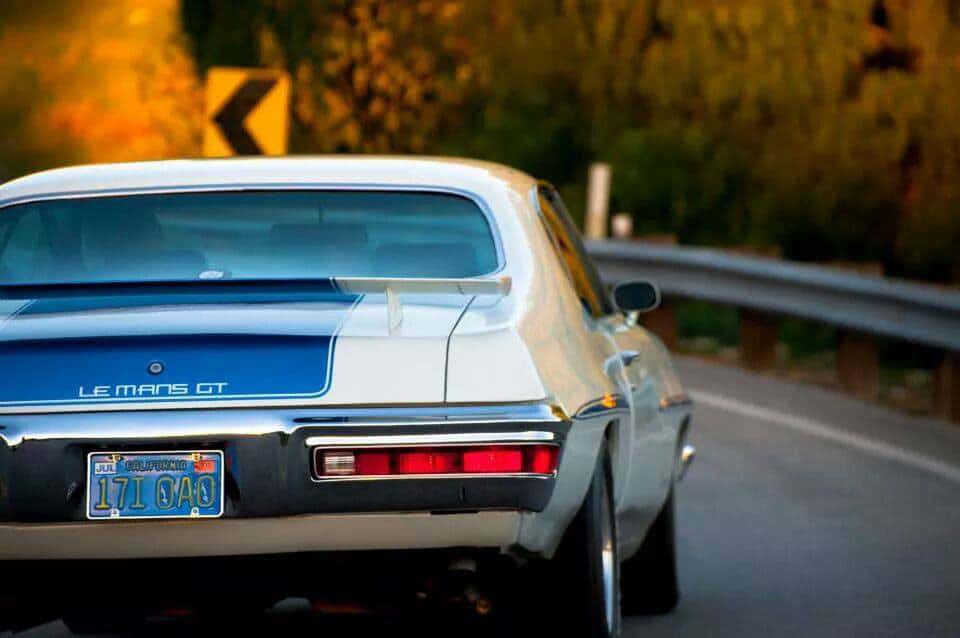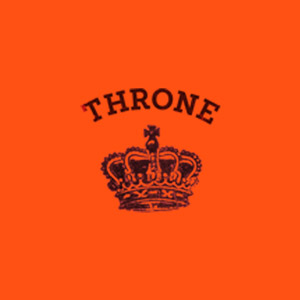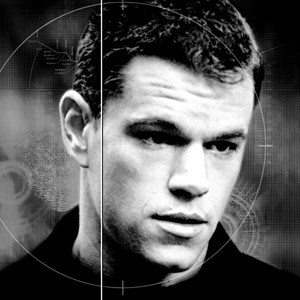There’s something deeply, primally satisfying about the snap of a mechanical chronograph. Not only just for the feeling of tiny, precision-engineered parts springing to life and working together at the touch of a finger, but for what that action represents- I’m not just wearing a watch now, I’m timing something. Whether it’s boiling an egg or checking a pulse, I’m using this chronograph for something deliberate, something that needs recording. Yes, most of the time that thing is steeping tea or something equally mundane, but every once in a while that chronograph times something special.
Such was the case a few weeks ago when I was given the opportunity to run my 1972 Pontiac Le Mans in the prestigious “Drive Tastefully: Barker Hangar” rally. While only the third event hosted by the fine folks over at Petrolicious, the Drive Tastefully events have already brought out the cream of the classic car crop, with attendees like Porsche customizer Magnus Walker bringing the “Urban Outlaw” 911, and former Petersen Museum chairman, legendary collector, and close friend of Steve McQueen; Mr. Bruce Meyer, dropping in with his Mercedes 300SL Roadster- because why not?
Showing up in my lowly Pontiac against this kind of royalty was more than a little intimidating, so I prepared the best way I could- I brought along hot-shoe auto journalist and close personal friend Blake Z. Rong along as my co-driver for the event (read his coverage of the rally, and the madness that went on behind the scenes, here- it’s hilarious), and I strapped on the one watch I’d trust to time an event like this. That watch, my 1976 Seiko 6139-6005, might not get the attention that some of its stablemates do, but it’s been absolutely reliable from the day I bought it. More than that, it’s been on my wrist through everything from running at the NASCAR driving school, to graduating from university, to a broken engagement.
At the first stop of the day, it quickly became apparent that what was on everyone’s wrists was just as interesting as what they were driving. Classic cars and vintage chronographs go together like peas and carrots, and as I chatted with the other drivers the talk turned to watches. Almost immediately, I spotted what I thought was a Seiko 6139 “Helmet” on a wrist, but upon closer inspection it turned out to be even bigger, heavier, and more 70’s- the gigantic and rarely-seen Omega Speedmaster Mark III, a watch that might have the most wrist presence of anything I’ve ever seen. The next thing I know, I’m casually talking Seiko with another driver, and he happens to hand me his card.
He’s no other than David S K Lee, CEO and Chairman of Hing Wa Lee, the largest jewelry retailer in Southern California, and he’s timed his run behind the wheel of his Ferrari 250 Lusso with his “normal watch”- a gorgeous white gold Rolex Daytona. As the brief stop in Malibu’s beautiful Paramount Ranch began to wind down, my co-driver pulled me aside to talk with one of his friends- automotive writer, video producer, and former chairman of The Moth, Alex Roy. Alex and I only had time for a brief chat before he climbed back into his Morgan 3-Wheeler, but as he pulled on his helmet and gloves he revealed that he was riding with a bit of his late father. The well-worn TAG Heuer Monaco on his wrist was his dad’s everyday wear, and now accompanies Alex on all sorts of adventures.
As I slid behind the wheel of the Pontiac, ready to drive the second stint of the day from the ranch all the way down the hills to Barker Hangar in Santa Monica, once the home of Howard Hughes’ private toy box, I was gung-ho. After handing the driving duties to my partner for the morning, now was my first real chance to stretch my Le Mans’ legs, an opportunity I was determined not to waste. The canyon roads wound further upward, higher into the Santa Monica mountains, and the modified A-body brute responded with remarkable poise, leading a pack of American iron shuffled together among the Porsche 911s and Alfa Romeos that made up the bulk of the rally.
Up here, above the clouds, on roads like Mulholland, Piuma, and Saddle Peak, were flashes of mechanical brilliance, moments that deepen the bond between man and machine, be it timepiece or automobile. Behind us, a small-bock Corvette Sting Ray snarled, fat rear tires scrabbling for grip as its master throttled out of a tight bend just a bit too aggressively. A factory-clean 1970 Mustang convertible seemed content to bask in the mid-morning sun while its owner cruised lazily among the cliffs and ocean views. In my passenger seat, my co-driver hummed the theme from “Bullitt” as our rearview mirror became a window into the American dream, circa 1967.

And as the morning and the mountain reached their peak, the rally took a left turn onto a narrow one-lane strip called Tuna Canyon Road. My hand instinctively reached for my left wrist, and with a sharp, cathartic click the red hand of my 6139 began its timing sweep. Almost immediately, the entire experience of the rally changed. Tuna Canyon went from one lane, to one way, to a guardrail free ribbon of pavement approximately six inches wider than my wide-track Pontiac. Nimble little Alfa Spiders and Healey 3000s skipped off, becoming specks in the distance, while our big American contingent ground to a crawl and huddled for safety.
Questions raced through my head- That sign says the road narrows, how could it possibly get narrower? Who designed this as a public road? How the hell was this a midsize car in 1972? Braking and steering reflexes were tested. Obscenities were exchanged, and combined in heretofore unseen arrangements. Finally, after what felt like hours, we caught our first glimpse of Pacific Coast Highway, and a line of our fellow rally participants. I cracked the driver’s window for a moment, and my overheated brakes greeted me with a smell that I still maintain with some cheese would make for a pretty decent sandwich. Another click of the 6139’s top pusher put the ordeal into perspective. 9 minutes, 17.4 seconds. According to the map, 4.3 miles from the top of the canyon to the bottom. But the car, and the watch, had survived, and more than just surviving had performed well.
The smell of the Pacific wafted away the hamburger smell of the brakes as the Corvette and I turned onto PCH, and its driver issued a throaty V8 challenge. Once again, however, the Pontiac proved it could hang with the big boys, and we pulled away with a Magnaflow roar. It wasn’t long before we caught up to the Alfas and the Porsches, now mixed among the SUVs and new Mercedes sedans of normal Santa Monica traffic, and rally organizer and my former boss Afshin Behnia and I gave each other the thumbs up as we pulled up alongside his Alfa GTV. I couldn’t place why at the time, but that gesture stuck with me.
The roads turned mundane as we pulled closer to the hangar, and while the car ticked itself cool in the parking lot I mulled over that singular moment as much as anything else. That moment, really, was a fitting metaphor for the entire experience, for the Seiko as much as for the Pontiac- a perfectly encapsulated example of what makes both the car hobby and the watch hobby great. You don’t need to spend a fortune, you don’t need to roll up in a Ferrari 250 with Steve McQueen’s Monaco on your wrist, you just have to find what’s cool. At the end of the day, no matter what level of enthusiast you are, we’re all just here because we like the machine. An $80 Vostok can be every bit as cool and as interesting as a $15,000 Daytona, just like I had just as much fun in my Pontiac as Bruce Meyer did in his 300SL. And once everyone’s made it down the mountain to the last stop and is starting to dig into lunch, you can look at the other guy and give him the thumbs up and you’ll both say “Hey, that’s pretty cool,”- and you’ll both mean it.









 Featured Videos
Featured Videos











